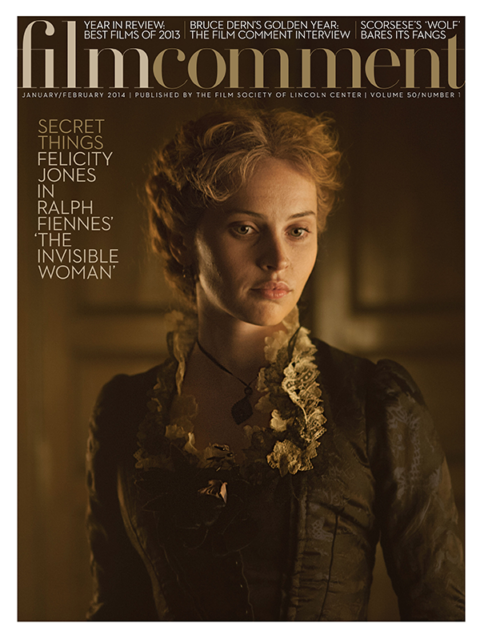The strongest visceral tremor I felt at the movies in 2013 was caused by the debris field that menaces George Clooney and Sandra Bullock in Gravity. I mention it because, though it’s largely a digitally created work—just like Pixar’s entirely digital Monsters University or DreamWorks’ The Croods—no one thinks of Gravity as an example of animation, while it is obvious to everyone that the latter two are. No matter what one thinks of Gravity as a film (or Life of Pi, a similar example), it represents new frontiers in what is possible with digitally aided filmmaking and is more ambitious in narrative and thematic terms than any studio-produced animated film this year.
For all of their technical brilliance, the vast majority of Hollywood’s animated features are weighed down by scripts that couldn’t possibly appeal to anyone of driving age
or older. For more thoughtful and nuanced feature-length animation aimed at a broader age group, one has to look overseas for the most part. However, relatively few international animated films are released here, which doesn’t leave much to choose from in compiling a best-of-the-year list. For instance, The Fake from Korea, O Apóstolo from Spain, and Brazil’s Rio 2096: A Story of Love and Fury have all won international festival awards, were all submitted for Oscar consideration, but collectively have had very few screenings in the U.S. With that in mind, here goes:

Consuming Spirits
Chris Sullivan
Fifteen years in the making, Sullivan’s personal tale of incestuous small-town woe employs virtually every non-digital animation technique available. Though technically released in 2012, it didn’t reach theatrical audiences outside of New York until this year. There’s no other movie like it—seek it out.

Ernest & Celestine
Stéphane Aubier, Vincent Patar & Benjamin Renner
From France, the hand-drawn story of an unlikely friendship between a young mouse from an orphanage and the hungry bear she’s been taught to fear is a delightful mix of fantasy, wit, and just enough scary moments to distinguish it from most films aimed at children.

Frozen
Chris Buck & Jennifer Lee
Disney’s take on Hans Christian Andersen’s The Snow Queen is, first and foremost, a technical tour de force with stunning environments and beautifully animated falling snow throughout. The story subverts convention to a degree by foregrounding the relationship between sister princesses Anna and Elsa—who can magically create snow and ice—over possible love interests.

Is the Man Who Is Tall Happy?
Michel Gondry
Gondry’s film comes off as more of an exercise than more fully realized documentaries on the great linguist, philosopher, and activist Noam Chomsky such as Manufacturing Consent. That said, Gondry’s hand-drawn animation and the back-and-forth between filmmaker and subject is surprisingly appealing, much in the same variegated way as Lars von Trier’s The Five Obstructions.

A Letter to Momo
Hiroyuki Okiura
In this film influenced by the work of Hayao Miyazaki, a young girl is watched over by three well-meaning but bumbling goblins who help her come to terms with the recent loss of her father. It’s a wonderful example of traditional hand-drawn 2-D animation and proof that an animated feature can be written to appeal to children while also exploring serious themes of grief and loss.

Unmistaken Hands: Ex Voto F.H.
Quay Brothers
Loosely based upon the short story The Flooded House by Uruguayan writer Felisberto Hernandez, the nearly plotless Unmistaken Hands follows a man who has been hired by a woman to paddle her around in a boat through her intentionally flooded house. It’s perhaps the most refined example of what we have come to expect from the twins (hermetic environments, isolated characters, haunting musical scores) since Street of Crocodiles. (Full disclosure: the film was made with funding and post-production facilities from the Wexner Center for the Arts where I am employed.)
The Wind Rises
Hayao Miyazaki
If this is indeed Miyazaki’s final film, it is hard to imagine a more fitting story than the fantasized biography of Jiro Horikoshi, who designed fighter aircraft used by Imperial Japan during World War II. Miyazaki’s films are filled with fantastic images that celebrate flying, a reflection of his father’s career as an executive in aeronautic manufacturing. If Hollywood likes attempting to replicate success, it begs the question why no studio has given a more auteur-driven film a shot, given the critical acclaim and box-office success that has met each new Miyazaki film over the years.








